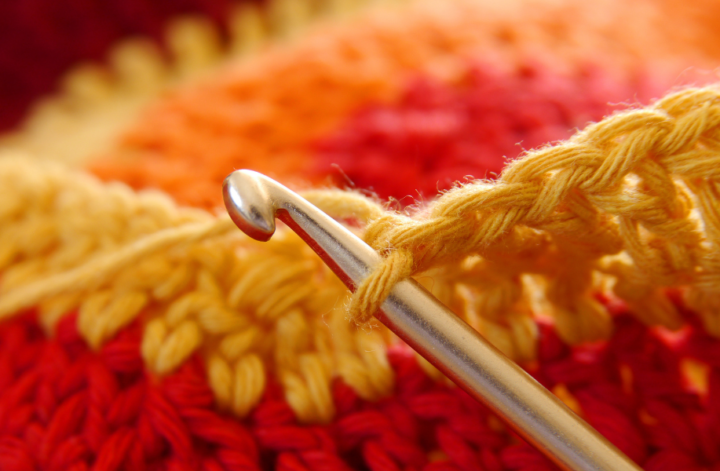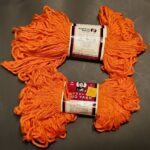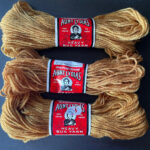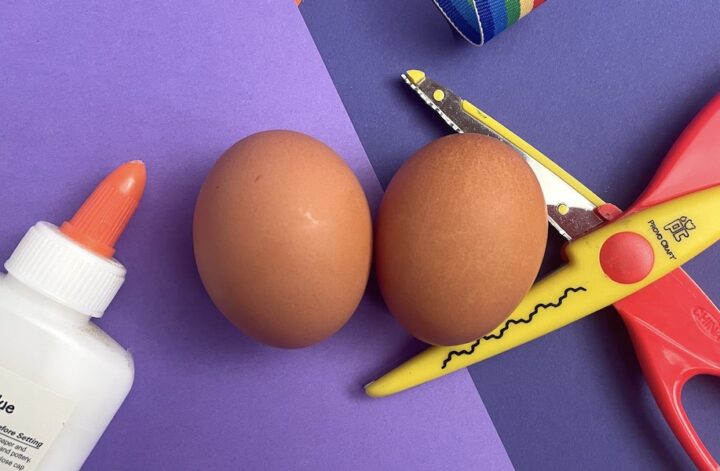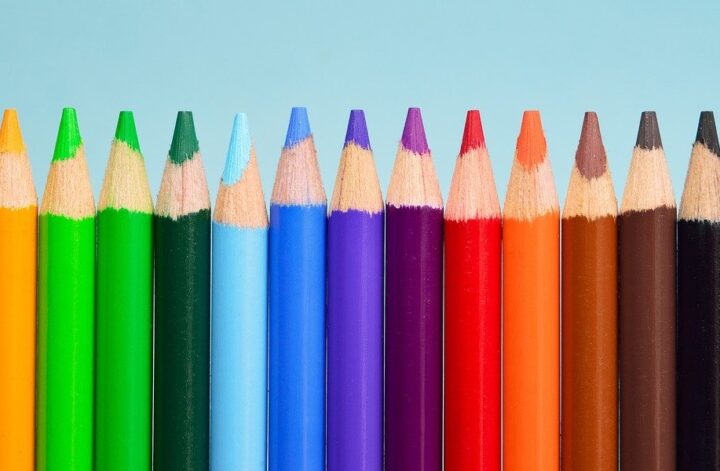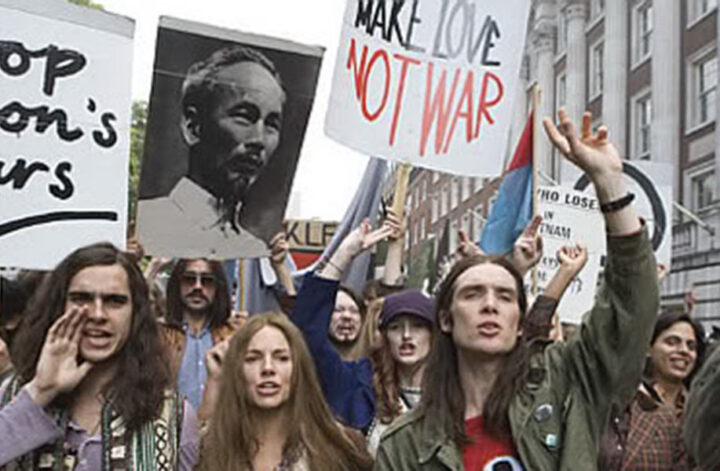Looking for a home decor crochet project that dials the shagaliciousness up to 12/10? Have we got a vintage round crocheted and knotted rug for you. It starts with a crocheted base that you add texture and color to with knotted-in lengths of yarn. Imagine the shading variations you can do–warm colors like the sun, ocean colors like the Caribbean sea, neutral grays and browns that hide dirt–endless options.
It seems a shame that Aunt Lydia’s Rug Yarn was discontinued because there are so many vintage project booklets out there like the one this crocheted and knotted rug pattern comes from. Of course there are appropriate yarn substitutes, but it would be nice to do it with yarn originally intended. And you can. Yarn people as a group have the habit of purchasing and squirreling away yarn for future projects that never quite get started, so there is a decent supply of previously squirreled vintage Aunt Lydia’s Rug Yarn at thrifts and for sale online.
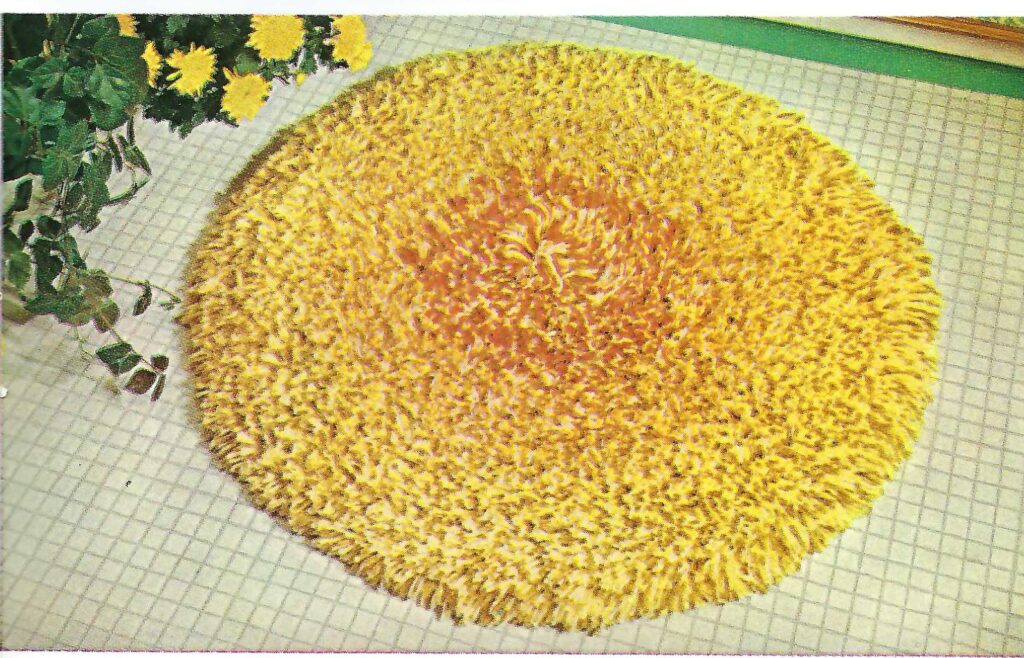
This round fuzzy rug is not a complicated pattern and because of the weight of the yarn, it crochets reasonably quickly. In terms of size, you can choose your own adventure, making it as big or small as you want. Bear in mind that since the rug will be machine washable, you want to keep it to a size that will fit in your machine.
The instructions for the fringe takes some minor thinking to figure out. the instructions give practical instructions for cutting the lengths of yarn: unfold the skein, cut both ends, cut skein into equal parts. That’s fine if you have Aunt Lydia’s yarn. If you do not, some calculations will have to be made.
My guesstimate is that you don’t want fringe more than 2″ long. That would mean you might want to the cut pieces to be maybe 4.5″ long to accommodate length used to make the knot. 4.5″ x 4 gives you an unfolded skein length of 18″, which may or may not be correct. You do your own imaginary math, I am not a reliable source for number-related information.
Also, the instructions don’t say if you add the fringe starting in the center or on the edge. Starting in the center makes the most sense. And there’s additional verification, since the dark colors are in the center and those are the ones you start with.
Speaking of colors, if you want to replicate the colors in this rug, you will need to figure out what “Bongo” and “Antique” are. As luck would have it, there are online sellers offering them up. One of the reasons I suspect this undated rug booklet is from the 1960s is the color name “Bongo.” On the label from the skein below, it is also called “Tangerine,” meaning they transitioned away from the beatnik-inspired “Bongo.”
The “Orange” is a little tougher to figure out. It has to be lighter than “Bongo.” So perhaps it’s what’s called “Pumpkin?”
Bits of History / Vintage Knit Crochet has a nice history of Aunt Lydia’s Rug Yarn. This yarn was made for a long time and had different fiber content. For wash and wear’s sake, it would make sense to try and use yarn made from the same materials. It’s easy to see if skeins are from the same era by the packaging.
Once you’ve got your rug, you’ll probably want to add a non-slip underlayment. Yarn rugs tend to be slippery on bare wood and linoleum. Care couldn’t be easier, a good shake outdoors or a ride in the washer is all it needs to stay clean and vibrantly colored.

